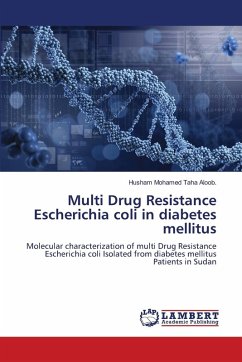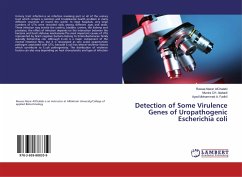
Quinolone resistance in Escherichia coli
Prevalence and diversity of quinolone resistance genes in E. coli clinical isolates from Iraq
Versandkostenfrei!
Versandfertig in 6-10 Tagen
52,99 €
inkl. MwSt.

PAYBACK Punkte
26 °P sammeln!
Quinolones are among the most commonly prescribed antimicrobials because of their broad-spectrum antimicrobial activity, which inhibit DNA synthesis by targeting two related but functionally distinct and essential type II topoisomerase, DNA gyrase and topoisomerase IV. The quinolone resistance is traditionally mediated by the mutation of chromosomal genes encoding DNA gyrase and/or topoisomerase IV. Plasmid-mediated resistance mechanisms also play a significant role in quinolone resistance. In recent years, a bacterial resistance against the quinolones has increased significantly, and no previ...
Quinolones are among the most commonly prescribed antimicrobials because of their broad-spectrum antimicrobial activity, which inhibit DNA synthesis by targeting two related but functionally distinct and essential type II topoisomerase, DNA gyrase and topoisomerase IV. The quinolone resistance is traditionally mediated by the mutation of chromosomal genes encoding DNA gyrase and/or topoisomerase IV. Plasmid-mediated resistance mechanisms also play a significant role in quinolone resistance. In recent years, a bacterial resistance against the quinolones has increased significantly, and no previous Iraqi survey has evaluated clinical isolates of Escherichia coli with reduce susceptibility to quinolones. This book provides a new data on the occurrence and diversity of quinolones resistance genes in E. coli strains isolated from patients with urinary tract infection in Iraqi hospitals.












